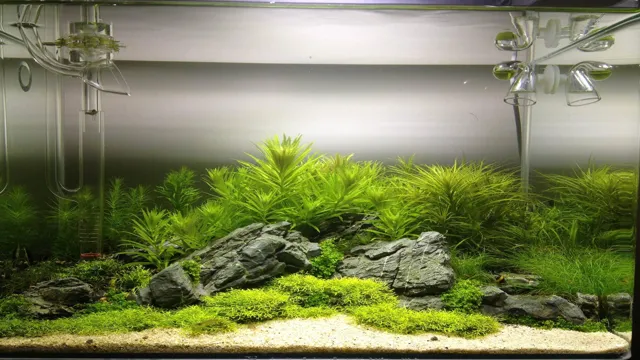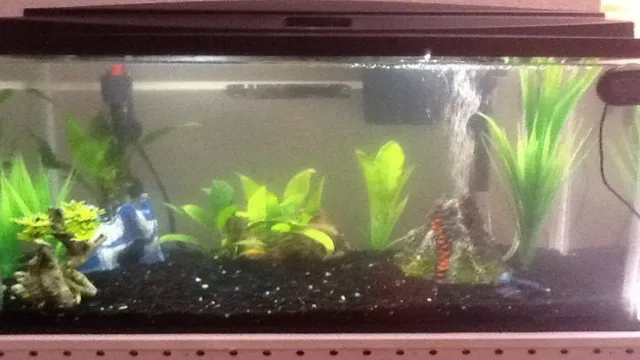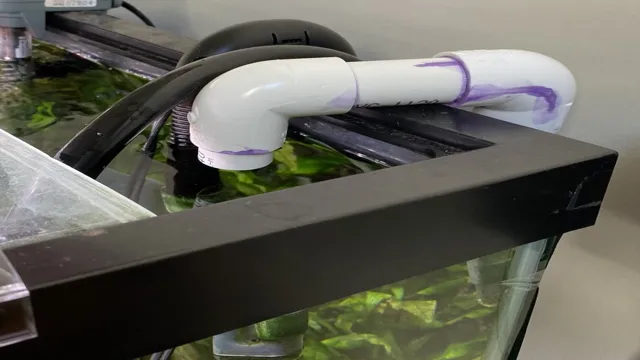How to Do Plantation in Aquarium: A Beginner’s Guide to Aquatic Planting

Are you looking for a fun and easy way to add some greenery to your aquarium? Look no further than planting! Plantation in aquarium is a beginner-friendly way to add both beauty and functionality to your aquatic environment. Not only do plants provide shelter and hiding spots for your aquatic pets, but they also help to improve water quality by filtering out toxins. Plus, they just look great! But where do you start? In this beginner’s guide, we’ll walk you through everything you need to know to get started with plantation in aquariums, from choosing the right plants to setting up your tank.
So let’s dive in and green up your aquarium!
Choosing the Right Plants for Your Aquarium
If you’re new to aquarium planting, choosing the right plants can make all the difference in the world. First of all, consider the size of your aquarium and the type of fish you have. Some plants require more space to grow and can even hinder the mobility of your fish.
Next, think about the lighting situation in your tank. Different plants have different lighting needs, so be sure to choose ones that will thrive under the conditions you have. Finally, consider the ease of care for each plant.
Some require more know-how, while others are very low maintenance. Don’t be afraid to start with a mix of plants to test what works best for you. Remember, plants not only beautify your aquarium, but also provide oxygen and a natural habitat for your fish to thrive in.
So take your time, research your options, and enjoy the planting process!
Consider Water Parameters and Lighting
When it comes to choosing the right plants for your aquarium, there are a few things to consider. First and foremost, make sure to take into account the water parameters of your tank. Different plants thrive in different water conditions, so be sure to research what each plant requires before making a purchase.
Additionally, don’t forget about lighting. Some plants require higher levels of light than others, while some may even do better in lower light conditions. Before making a decision on which plants to add to your aquarium, consider the overall aesthetic you are hoping to achieve, and ensure that the plants you choose will complement each other as well as your aquarium’s inhabitants.
Remember, a well-planted aquarium not only looks beautiful, but can also provide a healthy and natural environment for your fish and other aquatic creatures to thrive in. So take your time and choose wisely!

Choose Plants According to Growth Level
When it comes to creating a thriving underwater landscape, choosing the right plants for your aquarium is crucial. One important factor to consider is the growth level of the plants. Different species of aquatic plants have varying growth rates, from slow-growing to fast-growing.
It’s important to choose plants that will complement each other’s growth rates, as this will prevent overcrowding and ensure a balanced ecosystem. For example, if you have a fast-growing plant such as Hornwort, pair it with a slower-growing plant like Java Fern to prevent the Hornwort from taking over the tank. By considering growth levels when choosing your aquatic plants, you can create a beautiful and harmonious aquatic environment that will thrive for years to come.
So, the next time you’re selecting plants for your aquarium, make sure to keep growth levels in mind!
Preparing the Aquarium for Plantation
If you’re looking to add some greenery to your aquarium, the first step is to prepare the tank for planting. Begin by cleaning the tank thoroughly to remove any debris or harmful substances. After that, add your choice of substrate to the bottom of the tank; this will serve as the foundation for the plants to grow in.
A variety of substrates are available on the market, including gravel, sand, and specialized plant substrates. Then, it’s time to select and place your plants carefully. Choose plants that thrive in the conditions and lighting provided by your aquarium; some plants require more light or specific water conditions than others.
Place taller plants at the back and shorter ones towards the front of the tank to create an attractive visual effect. Remember to regularly maintain and care for your planted aquarium to ensure healthy and thriving plant growth. With these steps, you’re on your way to creating an eye-catching aquatic oasis in no time.
So, why not give it a try and experience the benefits of adding live plants to your home aquarium today!
Clean the Tank and Add Substrate
Before you begin planting your aquatic garden, you need to ensure that the aquarium is properly prepared for its new inhabitants. The first step in this process is to clean the tank thoroughly. Start by removing any decor, gravel or sand, and washing them in warm water to remove any debris or dirt that may have collected.
Then, using a non-toxic aquarium cleaner, clean the inside of the tank, being sure to scrub all sides and corners to remove any algae or other buildup. Rinse the tank and decorations with clean water, making sure to remove all traces of the cleaning solution. Once the tank is clean, you can add the substrate, which will serve as the foundation for your aquarium plants.
Choose a substrate that is suitable for the types of plants you will be growing and add it to the tank, making sure that it is level and covers the entire bottom. A good rule of thumb is to have a substrate layer that is at least two inches deep. With a clean tank and properly laid substrate, your aquarium is now ready for planting.
Install a Quality Filtration System
When it comes to preparing your aquarium for planting, installing a quality filtration system is key. Not only does a good filtration system help keep your tank clean and clear, it also provides the necessary nutrients for your plants to grow and thrive. A high-quality filter will remove harmful substances like ammonia, nitrate, and nitrite from the water, while also providing the necessary oxygen for your plants to breathe.
When choosing a filtration system, look for a model that is suited to the size of your tank and the specific needs of your plant species. With the right filtration system in place, your aquarium will provide the perfect environment for your plants to flourish and thrive.
Add CO2 and Fertilizers if Necessary
When preparing your aquarium for plant life, it’s important to assess the current levels of CO2 and nutrients in the water. If these levels are low, you may need to add CO2 and fertilizers to ensure your plants have everything they need to thrive. One way to add CO2 is through the use of a CO2 diffuser, which releases small amounts of the gas into the water over time.
Fertilizers, on the other hand, can be added in liquid or pellet form and should be carefully measured to avoid over-fertilization, which can harm both plants and fish in the aquarium. By monitoring and adjusting these levels as needed, you can create an optimal environment for your aquatic plants to grow and flourish. So don’t forget to add CO2 and nutrients if necessary to give your aquarium plants the best chance of success.
Planting the Aquarium
Planting the aquarium can seem like a daunting task, but with the right knowledge and tools, it can be a fun and rewarding experience. First, it’s crucial to choose the right plants for your aquarium. Some factors to consider include lighting, water temperature, and pH levels.
Once you’ve chosen your plants, it’s time to prepare the aquarium. It’s essential to wash the substrate and any decorations thoroughly to remove any debris or contaminants. Then, add a layer of nutrient-rich soil, which will provide your plants with the necessary nutrients to thrive.
When planting your aquarium, start with the taller plants at the back and work your way forward, spacing them appropriately to ensure they have room to grow. It’s also essential to keep an eye on the plants over time, trimming them as needed and providing them with the proper care they need to flourish. With the right care and attention, you can have a stunning, vibrant aquarium full of healthy, thriving plants.
Plant in a Designated Area
When it comes to planting the aquarium, it is essential always to plant in a designated area. You don’t want your plants floating around the tank and getting in the way of your fish. Plus, having plants placed strategically throughout the aquarium can provide hiding spots and shade for your fish.
The type of plants you choose will depend on your aquarium setup and the type of fish you have. Some plants may require more light or specific water conditions to thrive. Before planting, make sure you research the needs of your particular plants and create a layout that works best for your tank.
By planting in a designated area, your aquarium will not only look more aesthetically pleasing, but it will also provide a natural and comfortable habitat for your fish. So, go ahead and choose some plants that match your aquarium décor and give your fish a beautiful living space they can call home.
Plant in Small Groups
Plant in Small Groups When it comes to planting your aquarium, one key tip to keep in mind is to plant in small groups. This not only adds visual interest but also creates a more natural-looking environment for your fish. When you plant in larger groups, it can become overwhelming for both the fish and the viewer.
A small cluster of plants can provide a nice resting spot for fish or a place to hide, which can reduce stress and create a calming environment. Additionally, planting in groups can help to control algae growth as the plants will compete for nutrients in the water, leading to a healthier ecosystem. Overall, planting in small groups is an easy and effective way to elevate the look and health of your aquarium.
Try experimenting with different plant types and arrangements to find what works best for your aquarium setup. Happy planting!
Maintaining the Aquarium Plants
If you’re wondering how to do plantation in an aquarium, it’s important to know that the success of your aquarium’s plants will depend on several factors. First and foremost, ensure that you have good quality substrate- this is essential for the plants’ roots to take hold and establish themselves. Secondly, make sure you have adequate lighting for your plants- most aquatic plants require 8-12 hours of light per day, so investing in a proper lighting system is key.
Additionally, keep in mind the type of plants you want to grow- some aquarium plants require CO2 injection to thrive, while others do not. Lastly, regularly prune your plants to prevent overcrowding and remove dead or decaying leaves. Following these steps will help ensure your aquarium plants grow healthy and beautiful!
Regular Water Changes
When it comes to maintaining your aquarium plants, regular water changes are essential. They help remove any excess nutrients or waste products that can build up in the water and harm your plants. Without regular water changes, your plants can become stunted and develop algae growth, which can leave your aquarium looking dirty and unappealing.
To maintain healthy aquatic plants and a clean aquarium, aim to change 10-20% of the water in your tank every one to two weeks. Additionally, make sure that you are using a water conditioner to remove any harmful chlorine and chloramine from your tap water before adding it to your aquarium. With consistent water changes, you can create a thriving underwater garden that is sure to impress both you and your fish!
Prune and Trim Regularly
Maintaining aquarium plants is not only aesthetically pleasing but also essential for the health of your aquatic pets. One way to ensure that the plants are thriving is to prune and trim them regularly. Pruning means removing dead or decaying leaves, stems, and roots, whereas trimming involves clipping off overgrown parts of the plant.
By doing so, you’re not only preventing potential waste buildup and disease but also promoting new growth. Additionally, this practice keeps aquatic plants in good shape, and it also helps maintain a balanced, healthy aquarium environment. So, give your aquarium plants the attention they require and keep them looking great by pruning and trimming them on a regular basis.
Conclusion and Final Thoughts
To sum it up, planting in your aquarium is like gardening underwater. You need to have the right tools, prepare the soil, select the right plants, and tend to them regularly. By following these steps and getting creative with your aquascape, you can create a lush underwater oasis for your fish and yourself to enjoy.
So, grab your gardening gloves and dive in – your underwater garden is waiting to be grown!”
FAQs
What are the benefits of planting in an aquarium?
Aquarium plants provide oxygen, absorb toxins, and create a natural environment for fish to thrive in.
How do I choose the right plants for my aquarium?
Consider factors such as lighting, temperature, and the needs of your fish when selecting plants for your aquarium.
What equipment do I need for planting in an aquarium?
You may need substrates, fertilizer, and lighting equipment specifically designed for aquarium plants.
What is the best way to plant aquarium plants?
It’s important to plant aquarium plants carefully, ensuring that the roots are fully covered in substrate and that the plants are not overcrowded.
How often do I need to fertilize my aquarium plants?
The frequency of fertilization will depend on the individual needs of your plants, but generally, it’s recommended to fertilize once a week.
What are some common mistakes to avoid when planting an aquarium?
Overcrowding plants, not providing enough light or nutrients, and not considering the needs of your fish can all lead to problems with planted aquariums.
Can I grow flowers in an aquarium?
Yes, there are species of aquarium plants that can produce flowers, such as the Amazon Sword plant.






